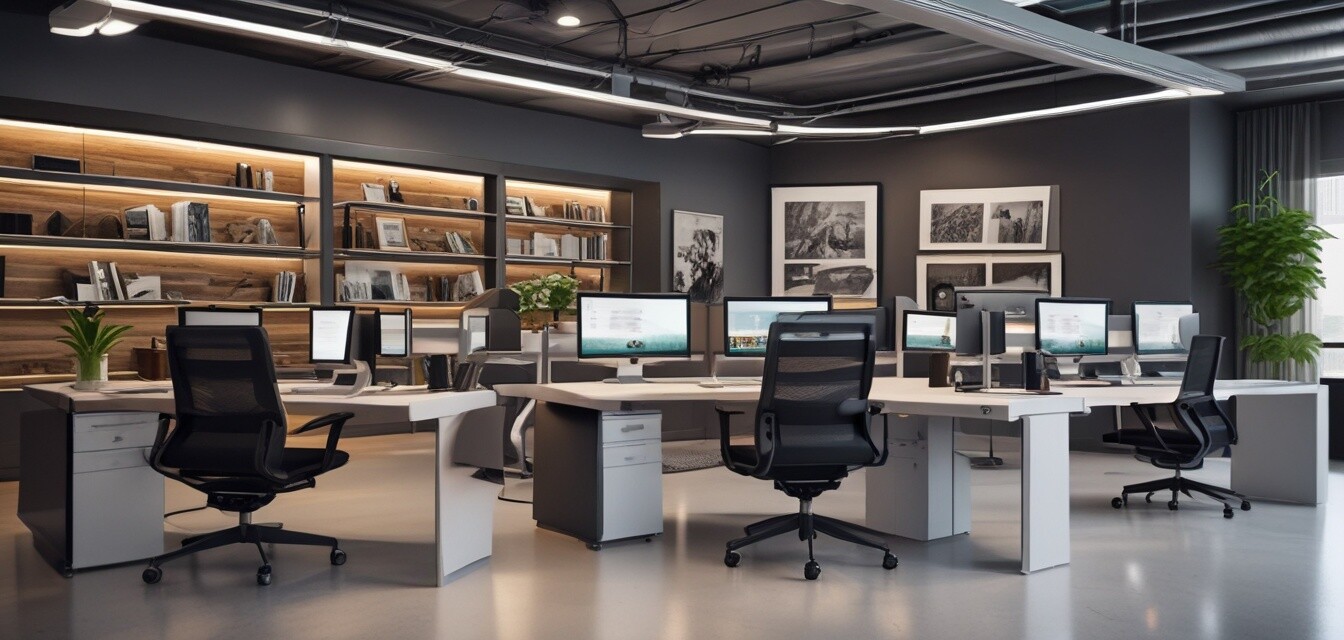
The Rise of Co-Working Spaces and Their Impact on Home Offices
Key Takeaways
- Co-working spaces are influencing home office designs.
- Flexibility and collaboration in work environments are becoming essential.
- High-tech features are expected in home setups, inspired by co-working spaces.
- Ergonomic accessories play a key role in productivity.
- Understanding current trends can improve your own home office environment.
In recent years, co-working spaces have emerged as an innovative solution to traditional office work, accommodating the needs of various professionals. This trend has set expectations for home office setups that mirror the flexibility, aesthetics, and technology found in these shared workspaces. In this article, we will explore how co-working spaces are influencing the design and functionality of home offices.
What Are Co-Working Spaces?
Co-working spaces are shared work environments that offer individuals and teams a place to work independently or collaboratively. They are often equipped with a range of amenities aimed at enhancing productivity and comfort, including:
- High-speed internet
- Various seating arrangements
- Meeting rooms
- Networking opportunities
- Event spaces
The Growth of Co-Working Spaces
The demand for co-working spaces has surged dramatically over the past decade. As more professionals seek flexible working arrangements, these environments have become a preferred choice for freelancers, startups, and even established companies. According to recent studies, the co-working space industry is predicted to grow significantly in the coming years.
Impact on Home Office Setups
As co-working spaces continue to flourish, they are shaping the expectations for home office setups in various ways. Below are some impactful trends influenced by the rise of these spaces:
1. Emphasis on Flexibility
Flexibility in home office design helps cater to varying work styles. Those who work remotely can benefit from:
- Adjustable desks
- Comfortable and mobile seating
- Options for both collaborative and solitary work environments
2. Collaboration and Social Interaction
The collaborative atmosphere found in co-working spaces is prompting home office setups to incorporate elements that encourage teamwork and communication, such as:
- Multi-monitor setups for enhanced productivity
- High-quality audio equipment for virtual meetings
- Open layout designs that promote collaboration
3. Technology Integration
Co-working spaces typically feature the latest technology, which influences home office setups to include:
- Smart docking stations for connecting devices
- Ergonomic accessories that enhance comfort and reduce fatigue
- Advanced networking solutions for reliable connectivity
Creating a Home Office Inspired by Co-Working Spaces
To transform your home office into a space reminiscent of collaborative environments, consider these approaches:
- Design a layout that encourages movement and interaction.
- Invest in essential tech accessories that create a functional workspace.
- Incorporate ergonomic accessories that promote wellness.
- Introduce aesthetic elements like plants and artwork to inspire creativity.
Gathering Inspiration
Visit our page on ergonomic accessories and explore ways to enhance your space. Additionally, take a look at our collection of multi-monitor setups to see how technology can boost your workflow.
Pros
- Increased productivity and motivation.
- Enhanced networking opportunities.
- Access to professional resources and amenities.
Cons
- Potential increased costs for high-quality setups.
- Adapting to a changing workspace dynamic.
- Overwhelming noise levels may disrupt focus.
Future Trends in Home Office Setups
As the nature of work evolves, so will the design and functionality of home offices. Emerging trends to watch out for include:
| Trend | Description |
|---|---|
| Hybrid Work Environments | Integration of home and office resources for seamless workflow. |
| Biophilic Design | Incorporation of natural elements to improve air quality and mood. |
| Smart Home Technology | Use of connected devices to optimize work efficiency. |
By staying aware of these trends, you can make informed decisions that enhance both your home office experience and productivity.
Conclusion
The rise of co-working spaces has undoubtedly shaped the expectations for home office setups. By embracing flexibility, collaboration, and technology, individuals can create productive environments that draw inspiration from these innovative workspaces. As we continue to navigate a modern work landscape, the principles and designs of co-working spaces will likely play a pivotal role in how we work from home.